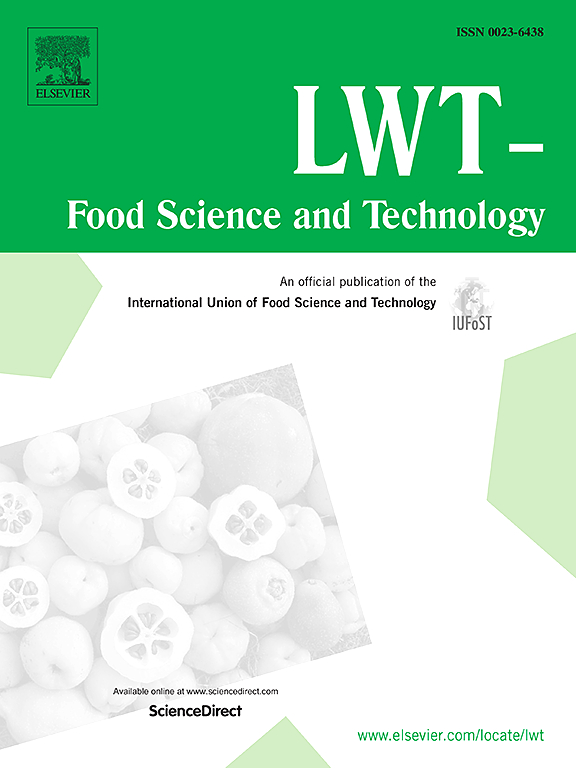解密太平猴魁优质绿茶的香气特征:关键花香化合物和工艺控制对挥发性化合物的作用
IF 6
1区 农林科学
Q1 FOOD SCIENCE & TECHNOLOGY
引用次数: 0
摘要
优质绿茶香气的生产仍然是一个重要瓶颈,限制了茶叶产品的附加值。本研究采用气相色谱-质谱法(GC-MS)和气相色谱-原子吸收法(GC-O)对优质(TPHK-CK)和普通(TPHK)太平猴魁的香气化合物进行了比较和分析。共鉴定出 35 种挥发性化合物作为气味活性成分。定量分析显示,17 种化合物是香港主打香水的主要香味成分,而 13 种则是香港主打香水的重要香味成分。具体来说,芳樟醇、香叶醇、β-酮、3-甲基丁醛和二甲基硫醚被确定为通过香气省略和添加实验改变香气的关键标记。对加工过程中的代谢物进行的风味全息分析表明,二次焙烧阶段具有显著影响。对加工条件的进一步调整表明,低温二次焙烧可提高整体香气质量。这项研究强调了有针对性的香味调节在提高茶叶产品质量和价值方面的潜力。本文章由计算机程序翻译,如有差异,请以英文原文为准。
Deciphering the aromatic signature of Taiping Houkui premium green tea: The role of key floral compounds and process control on volatile compounds
The production of premium green tea aroma remains a significant bottleneck, limiting the added value of tea products. This study aimed to compare and analyze the aroma compounds in premium (TPHK-CK) and common (TPHK) Taiping Houkui using gas chromatography-mass spectrometry (GC–MS) and gas chromatography–olfactometry (GC-O). A total of 35 volatile compounds were identified as odor-active components. Quantitative analysis revealed that 17 compounds were key aroma contributors in TPHK-CK, while 13 were significant in TPHK. Specifically, linalool, geraniol, β-ionone, 3-methylbutanal, and dimethyl sulfide were identified as key markers of aroma modification through aroma omission and addition experiments. Flavor omics analysis of metabolites during processing showed that the secondary roasting stage had a significant effect. Further adjustments to process conditions demonstrated that low-temperature secondary roasting could enhance overall aroma quality. This study underscores the potential of targeted flavor modulation to improve tea product quality and value.
求助全文
通过发布文献求助,成功后即可免费获取论文全文。
去求助
来源期刊

LWT - Food Science and Technology
工程技术-食品科技
CiteScore
11.80
自引率
6.70%
发文量
1724
审稿时长
65 days
期刊介绍:
LWT - Food Science and Technology is an international journal that publishes innovative papers in the fields of food chemistry, biochemistry, microbiology, technology and nutrition. The work described should be innovative either in the approach or in the methods used. The significance of the results either for the science community or for the food industry must also be specified. Contributions written in English are welcomed in the form of review articles, short reviews, research papers, and research notes. Papers featuring animal trials and cell cultures are outside the scope of the journal and will not be considered for publication.
 求助内容:
求助内容: 应助结果提醒方式:
应助结果提醒方式:


